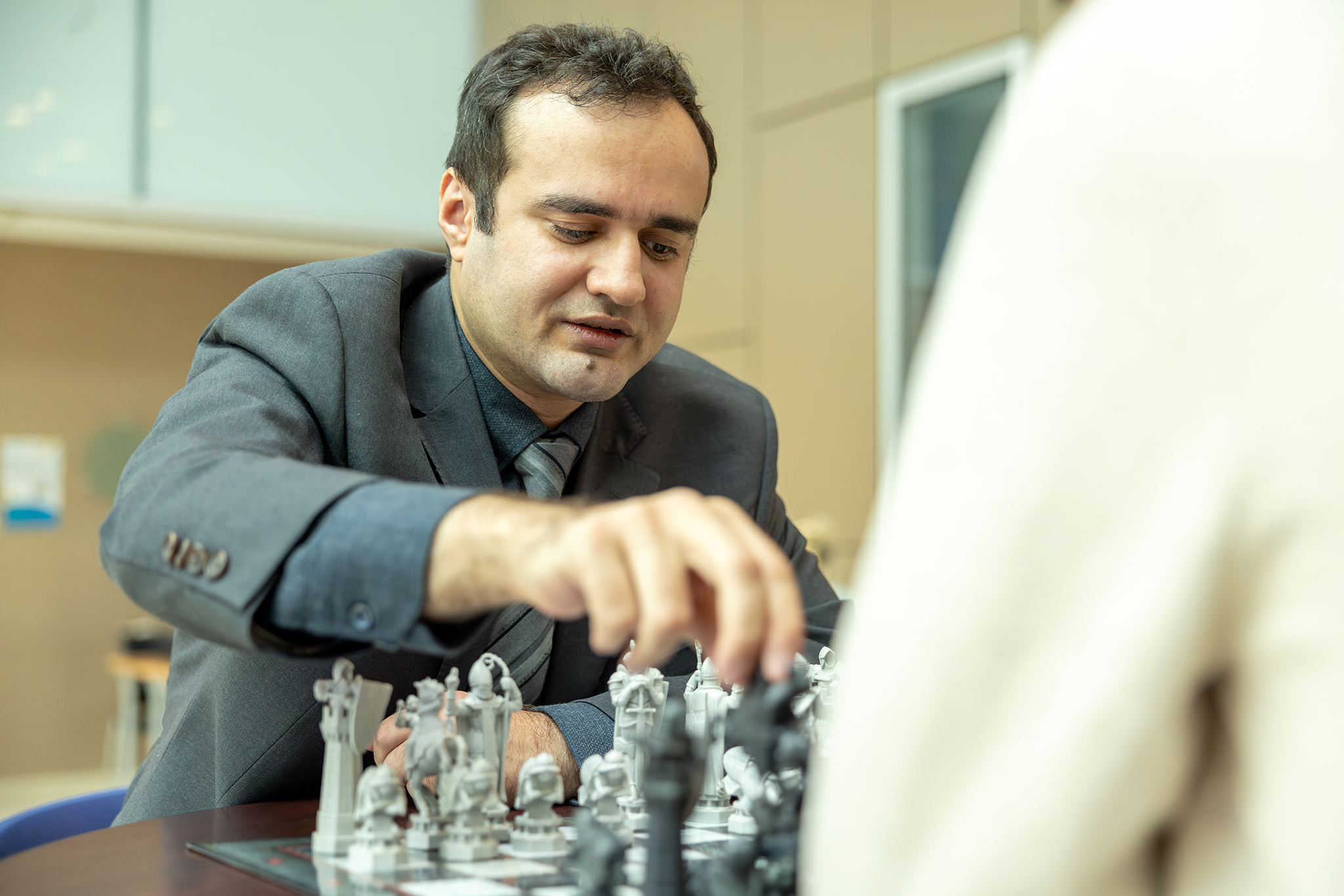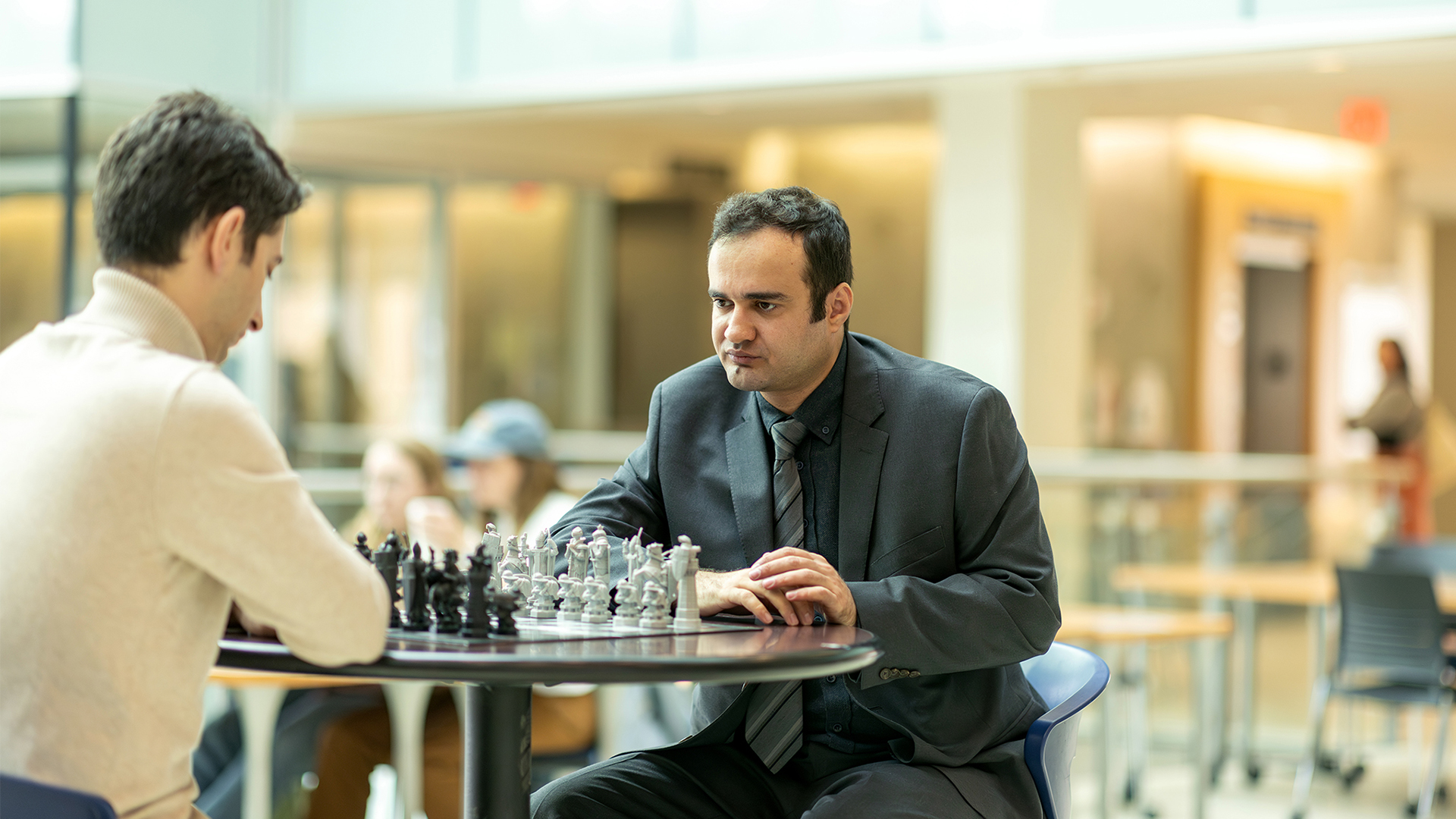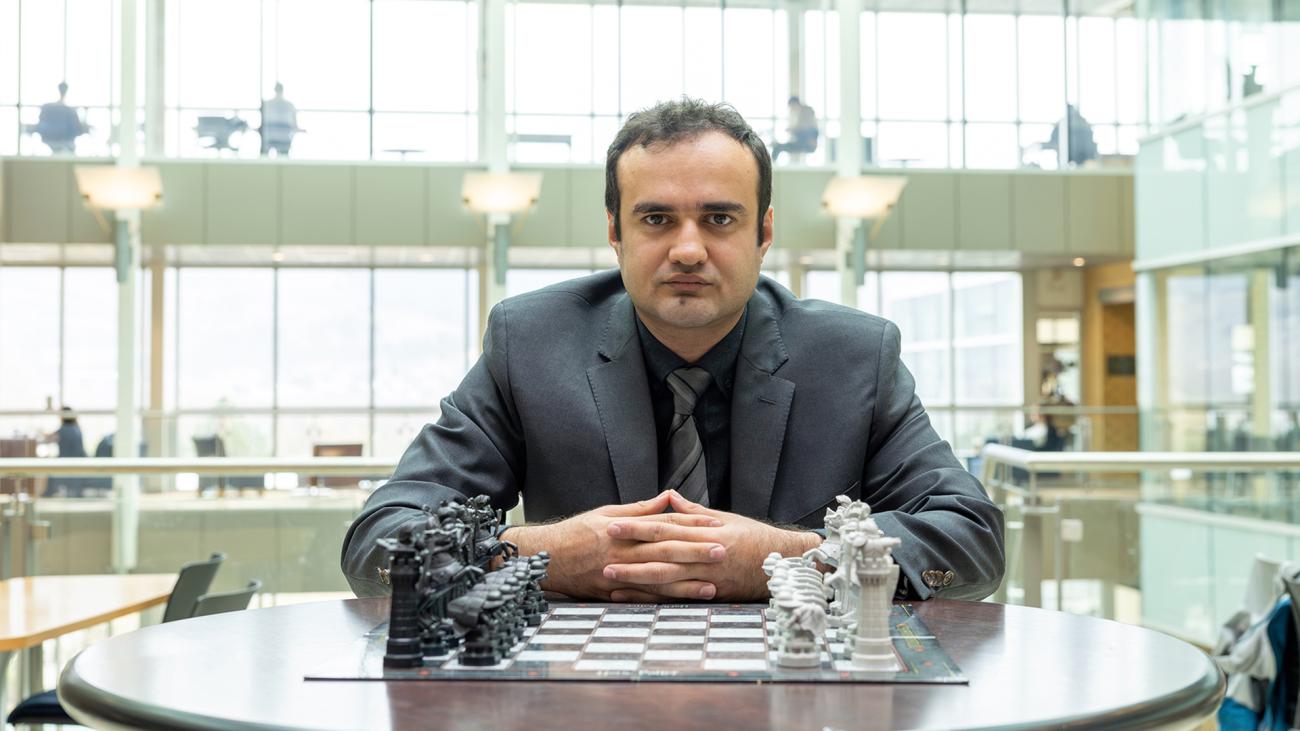Math games have real consequences and rewards at UBC Okanagan
Researcher Dr. Amir Ardestani-Jaafari takes a pessimistic view of everything, to help prepare the world for anything.
Imagine you’re the city planner of a community facing a furious wildfire. You must choose which neighbourhoods to evacuate, what roads to close, and where to station emergency crews.
Time is thin.
Suddenly, evening winds fan embers across the city’s lake. Sparks spread new hotspots near the hospital, and flames are threatening the town’s main evacuation route.
You don’t have all the data you need, but you must choose what to protect first.
Everyone needs your decision.
If that sounds like a challenge only found in movies and video games, meet Dr. Amir Ardestani-Jaafari.

The Assistant Professor in the Faculty of Management at UBC Okanagan is part of a growing focus on interdisciplinary research using robust optimization.
“In mathematics, we find the language to decode and solve complex problems,” Ardestani-Jaafari says. “For me, mathematics was never just about numbers; it’s a pathway to making a real difference. We live in a world intricately connected by networks that, if disrupted, can affect every aspect of our lives.”
How does robust optimization work?
Robust optimization adds a layer of intelligent planning to protect our intricate networks. The approach begins by assuming you’re staring down an unpredictable, shadowy opponent and prepares you to face unique challenges head-on, making your strategy more versatile.
You can compare it to chess, always thinking as far ahead as possible, but you can’t see your opponent. Further, you can’t predict the outcomes of your own moves. If that imagined fire were to attack the hospital, you might urge doctors to initiate their emergency plan. However, that may require changing evacuation routes.
Or, if the opponent attacks your bishop, you advance your knight. If you lose the knight, your rook reinforces your queen. The researchers don’t guess where trouble might happen; they calculate endless possibilities based on what would cause the most disruption while trying to minimize damage.
“We always take the most pessimistic viewpoint to safeguard against potential losses. By integrating robust optimization, we not only react to our opponents but strategize, ensuring our decisions remain resilient amid uncertainty. It’s about being ready, regardless of the challenges that come our way.”
Math research is interdisciplinary
Dr. Amin Ahmadi Digehsara joined UBC Okanagan as a postdoctoral fellow to continue researching robust optimization and supply chain network design. He says the work at UBC Okanagan is distinct because of its interdisciplinary nature.
Collaborations can happen in computer science, healthcare, engineering, and beyond.
“Incorporating network protection, particularly for emergency services, is quite innovative,” says Digehsara. “We’re aiming to expand this to encompass a broader range of natural disasters, making our approach relatively novel.
“Comparing our work to a game like chess is fair to some extent. We deal with uncertainties and always prepare for various scenarios, focusing on the most pessimistic outcomes to ensure we devise the most effective strategies.”

Healthcare is Ardestani-Jaafari’s primary focus, but he’s also helped cities envision how they can react to natural or manufactured disasters such as wildfires, earthquakes, or even armed conflicts.
By thoughtfully simulating worst-case attacks using algorithms and data analysis, they develop practical plans for protecting critical systems. Implementing such strategies could translate into less loss and faster recovery.
“We’re not just predicting problems; we’re actively preparing for them,” he explains. “As threats evolve and our networks grow, so must our strategies to defend them. We’re constantly adapting, constantly improving.”
You can use math “in the real world”
Ardestani-Jaafari pairs robust optimization and operations management across the UBCO campus. He’s collaborated on a research project that studied how to streamline millions of telemedicine appointments in China by using math to predict appointment lengths.
He’s also applied those same strategies to stroke care in the city of Montréal. His research aimed to link patients with healthcare centres best suited to their needs rather than sending them to the nearest hospital. It’s anticipated that the strategy could greatly reduce stress on patients and providers.
“UBC Okanagan’s commitment to interdisciplinary collaboration not only enriches our academic explorations but also ensures that we view challenges through a comprehensive lens,” he says.
“This holistic approach enhances our resilience and innovation and makes UBC Okanagan a beacon for visiting students, researchers, and partners. Collaboration across disciplines is not just encouraged here — it’s a cornerstone of how we imagine and shape the future.”
How to stop disasters before they strike
They conduct their research using realistic scenarios, such as limited budgets. They don’t rely on technology to solve problems. Extra funding, they say, could make the system more delicate. Complex, costly equipment or specialized repairs might not be available during an emergency.
The research shows there’s no bulletproof shield. But, by “gaming” worst-case scenarios, Ardestani-Jaafari and his colleagues hope to keep cities and networks safer when — not if — disaster strikes. In the future, they want their methods to model even more complex situations. For instance, what happens when one failure causes another, overloading parts of the network that weren’t initially attacked?
“Integrating mathematics with healthcare needs and community wellbeing can produce profound results,” he says. “We’re not just dealing with numbers; we’re uncovering stories hidden in data that can lead to better decisions and better outcomes.”

































